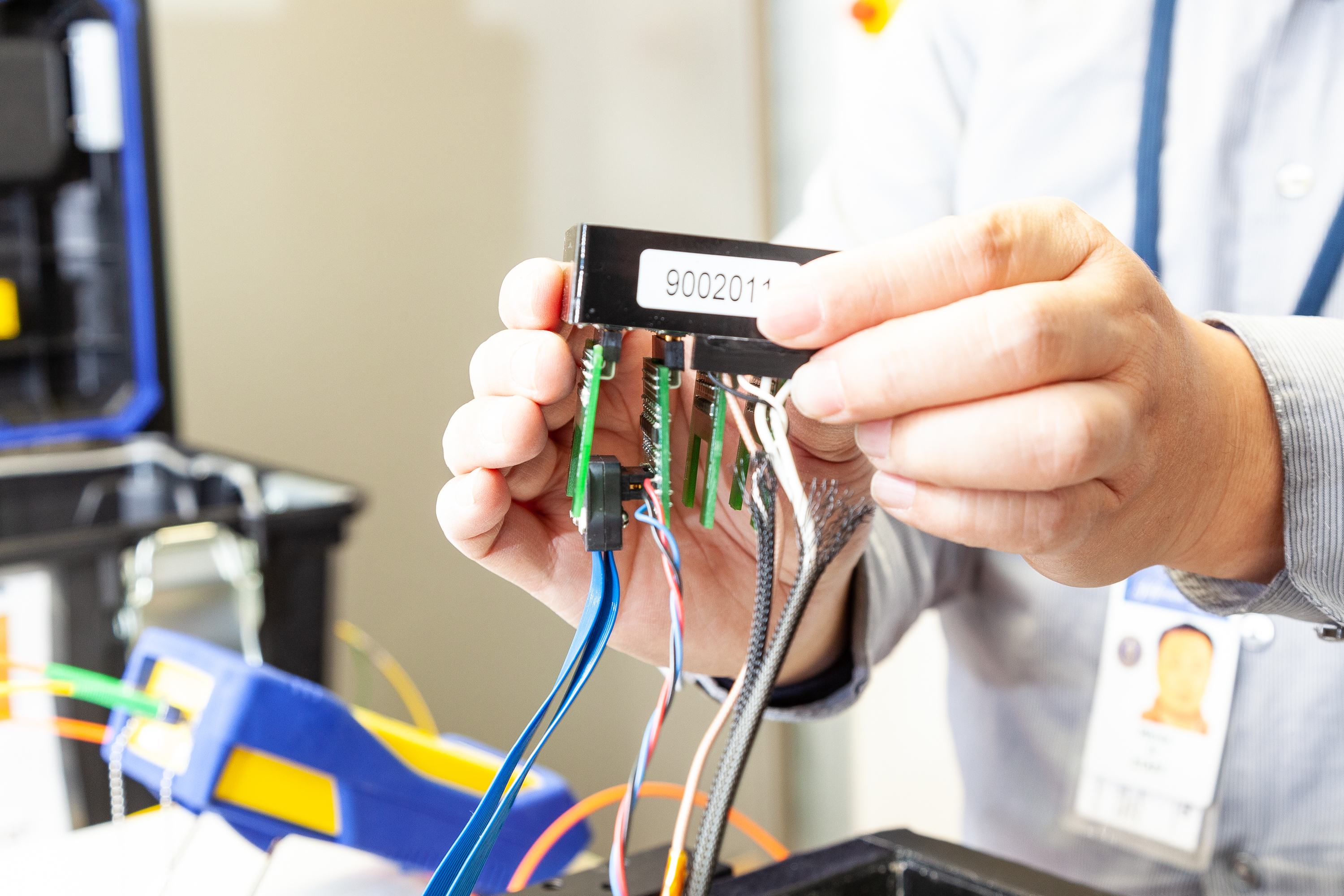After splitting a management role into two positions, the lab looks inward to find the right fit
The U.S. Department of Energy's Thomas Jefferson National Accelerator Facility requires careful oversight and strategic focus when it comes to safely executing the objectives within the Engineering Division’s Electrical Engineering Systems (EES) department. It’s no surprise, then, that when the deputy manager position within the department was vacated, hiring managers took extra care to ensure that the role would be carefully filled with the right fit.
After the hiring managers assessed all of the desired responsibilities for the deputy manager position, it was determined that the role requirements were much broader than could be filled by a single candidate. Looking inward, two lab employees emerged with two different, yet complementary skill sets, resulting in an ideal fit for the required duties at hand. That role was split into two positions so that each position had a concentrated area of focus: accelerator reliability or projects. The hiring managers selected Curt Hovater as the new EES deputy manager for projects, and Omar Garza was chosen as the EES deputy manager for accelerator reliability.
The Electrical Engineering department manages the electrical systems that support the Continuous Electron Beam Accelerator Facility (CEBAF), a DOE Office of Science User facility, through regular maintenance, projects to address obsolescence and projects to improve the performance of specific technical systems. Another function of the department is to support external projects, such as work being performed for the Linac Coherent Light Source II (LCLS-II) at SLAC National Accelerator Laboratory and for the Proton Improvement Plan II (PIP-II) at Fermi National Accelerator Laboratory, which supports the greater DOE mission.
The department also has a vested interest in keeping its workers safe by improving electrical safety measures through a series of policy and procedure updates. As such, the recent electrical safety improvements impacted the way work is planned and makes the need to split the role even more apparent.
“Both positions provide a tremendous opportunity to improve the EES department and provide additional room for growth for our technicians and engineers,” Ken Baggett, EES department head says.
“Not only that, but hiring for positions internally allows our staff to grow their careers and use the knowledge base they have already accumulated at the lab,” added Engineering Division Manager Will Oren.
Curt Hovater will serve as the EES deputy manager for projects. In this role, Hovater will work to improve integrated project requirement and scope definitions, develop a structured training program within EES for succession and engineering development, and integrate with the Environment Health & Safety Electrical Safety group to ensure appropriate and reasonable safety protocols are established for equipment under EES purview.
Omar Garza will serve as the EES deputy manager for accelerator reliability. In this position, Garza will track EES system performance, reliability and obsolescence issues for the CEBAF accelerator, halls and other lab initiatives. This will include a focus on integrated system reliability improvements and addressing resource, priority and scope issues.
“I see these roles as complementary to each other. CEBAF will benefit from an increased system awareness concerning reliability issues, an improved process to deliver projects, and targeted electrical safety training,” Hovater said. “The new organizational structure allows EES to continue supporting DOE accelerator projects beyond the lab. We have great engineers and technicians, so we should continue to contribute to these valuable internal and external projects.”
“The benefit of having two functions allows each of us to focus on projects that would benefit the JLab accelerator and associated machines, and as Curt mentioned, any external projects related to accelerator systems,” Garza agreed. “The sharing of ideas across reliability and project improvement spectrums could have a tremendous impact on future operations and system designs.”
The near-term vision for EES is to assist in the successful and safe restart of CEBAF for beam delivery in the upcoming nuclear physics run with high reliability. Further in the future, the goal is to support the overall lab agenda by being flexible and efficient with the lab’s resources, as well as modernizing some of the electronics in CEBAF.
“As we encounter challenges, sharing knowledge with each other will have long-range benefits for associated team members and colleagues across the accelerator environment. It is imperative that we work together and utilize our resources efficiently and successfully. Ultimately, we’re looking at one team with one goal to enhance our engineering staff and improve our systems,” Garza said.
Contact: Rebecca Duckett, Jefferson Lab Communications Office, duckett@jlab.org


